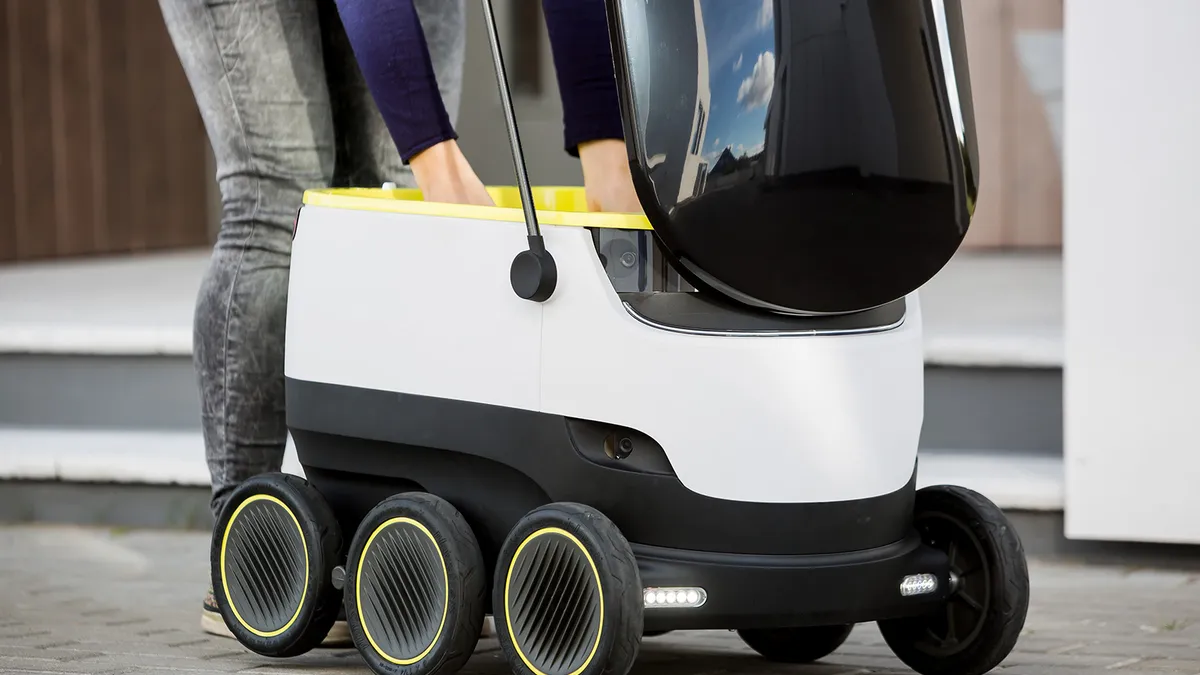Dive Brief:
-
Delivery robots will be able to operate on sidewalks and through crosswalks across the state of Virginia under a new state law passed late last month and going into effect on July 1 — the first such legislation enacted in the United States.
-
The Virginia law doesn’t require delivery robots to function within the line of sight of a human operator, but the operator must be able to take over if a problem occurs. The law imposes a 10-MPH speed limit on the robots, and a 50-pound weight limit.
-
The law, similar to other legislation that has been proposed in Florida and Idaho, was proposed by two Virginia lawmakers who worked with delivery robot maker Starship Technologies to gather input on the legislation.
Dive Insight:
No surprise to see Starship trying to encourage and drive legislation to cover deliveries by ground-based robots. Starship recently got its highest-profile pilot projects to date engaging in testing with DoorDash and Postmates, and like their counterparts in the airborne drone delivery game, they know it’s in their best interests to help create a safe, manageable and organized robot delivery environment. To do that, they need to get legislators to understand what their robots are capable of, as well as the reasonable limits they should be made to observe.
It's not clear if Starship will try to work with legislators in the same way on a state by state basis, but in encouraging state-level regulations for robot delivery and opening themselves up to legislators, they also may open themselves to some risks. For example, legislators in some states could react negatively, especially to the surface-level notion that robots could take jobs away from hard-working Americans, regardless of how true that notion is.
Also, in helping to fast-track robot delivery laws, Starship is paving an easy path for potential competitors, like perhaps the bipedal Cassie from Agility Robotics. It's not clear that the Virginia law would dictate too much about the type of robot that could be used, rather focusing more on getting robots to remain on sidewalks and within the white lines of crosswalks, as well as dictating how fast they can go and how large they can be. There are many companies at different stages of working on robots for applications that include delivery, but it's not clear that very many retailers or delivery services are ready to move ahead to deploy them in more than a market or two in a very limited way. Perhaps we'll see more progress with at least one state welcoming delivery robots with open arms.
There's no telling what we could see happen when this law goes into effect July 1. There could some interesting new robot delivery announcements right around that time, and depending on the level of activity, perhaps we'll see other states move to fast-track their own robot delivery rules. Although, there also could be a chance that Starship's small, six-wheeled delivery robot is the only one that is really ready to roll.












